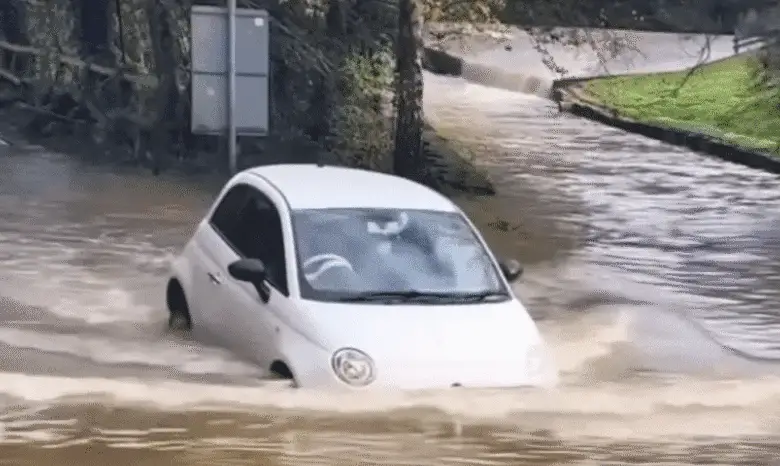How to Cross Flooded Areas with Your Car Without Putting Your Life or Vehicle at Risk

Driving in heavy rain or after a storm can be dangerous, especially when the road is partially covered by water. Although at first glance it may seem easy to cross a puddle or a flooded area, the reality is that many drivers make mistakes that can cost them dearly, both in vehicle repairs and in personal safety.
In this article you will learn how to cross water with your car safely, what precautions to take, and when it is better to stop and look for another route.
🌧️ The real danger of crossing water
Water on the road is not just a harmless puddle. It can hide:
-
Deep potholes or dangerous holes.
-
Objects dragged by the current.
-
Areas with strong currents that can move your vehicle.
-
Mud accumulation that reduces traction.
Even 30 centimeters (about 12 inches) of moving water can sweep away a small car, and 60 centimeters (about 24 inches) can move an SUV.
🔍 Before entering the water: Assess the situation
-
Measure the depth: if the water exceeds half the wheel, DO NOT enter. The engine and electrical system are at risk.
-
Observe the current: if you see objects floating and moving quickly, that’s a danger sign.
-
Check other vehicles: if you see other cars passing with difficulty, better wait or find an alternative route.
-
Turn off the air conditioning: this reduces engine load and prevents the belt from getting too wet.
🛠️ Preparation before crossing
-
Shift to a low gear (first or second) for more control.
-
Keep the revs high to prevent water from entering the exhaust pipe.
-
Close the windows and make sure no one opens the doors in the middle of the crossing.
-
Turn on low beam headlights to improve visibility.
🚘 During the crossing: Correct technique
-
Move forward slowly and steadily: don’t accelerate suddenly to avoid splashing water over the hood and into the intake.
-
Avoid braking in the water: you could lose traction and damage the brakes.
-
Don’t stop: if you stall in the water, the engine can absorb water (“hydrolock”) and be ruined.
-
Maintain a steady bow wave: a small wave in front of the car helps reduce direct water contact with the engine.
🏁 After leaving the water
-
Brake gently several times to dry the brakes.
-
Check if the engine sounds different or if there are warning lights on the dashboard.
-
If you notice a burning smell or smoke, stop and check.
-
If water reached inside the vehicle, turn off the engine and call for assistance: electronics may be damaged.
⚠️ Common mistakes to avoid
❌ Entering fast thinking that water won’t get in. This only creates big waves that damage the engine.
❌ Following another car too closely: if the one in front stalls, you will too.
❌ Trusting too much in a 4×4: height helps, but current can sweep away any car.
❌ Underestimating stagnant water: even without flow, it can hide structural road damage.
🧠 Expert tip
If you live in an area with frequent rain or floods, consider installing a snorkel for the engine (on off-road vehicles). This accessory raises the air intake and reduces the risk of the engine sucking in water.
It’s also useful to check the sealing of doors and windows to prevent leaks.
📌 Conclusion
Crossing water with your car can be safe if done with caution and knowledge, but it can also become a deadly trap if you underestimate the risk. The most important thing is to evaluate the situation before acting.
Remember: no destination is worth more than your life or that of your passengers. If in doubt, turn around and look for an alternative route. A few extra minutes can save your vehicle… and your life. 🚗💙



